Check out these amazing hotel deals!
- Save up to 30% on your hotel in Hawaii!
- Last-minute holiday hotel deals
- Top hotel deals for a new year trip
- Visiting Paris? Find the Best Deals & Reviews at TripAdvisor.
- Save 30% on hotels in Ocean City, Maryland...a TripAdvisor Top 10 Summer Destination!
- Save up to 30% on your hotel on your Winter Vacation!
- Find top-rated hotels at the lowest prices on TripAdvisor. Check rates now!
- Save up to 30% on hotels for a romantic getaway!!
Perched on majestic mountains, immersed in fairytale landscapes, or lapped by the waters… The Italian castles, so different from each other, tell us long gone stories on the border between reality and legend. Let yourself be led between crenelated walls, towers, peculiarities, and ancient characters on the tour of the 10 most beautiful castles in Italy.
10. Rocca Calascio, Calascio (Abruzzo)
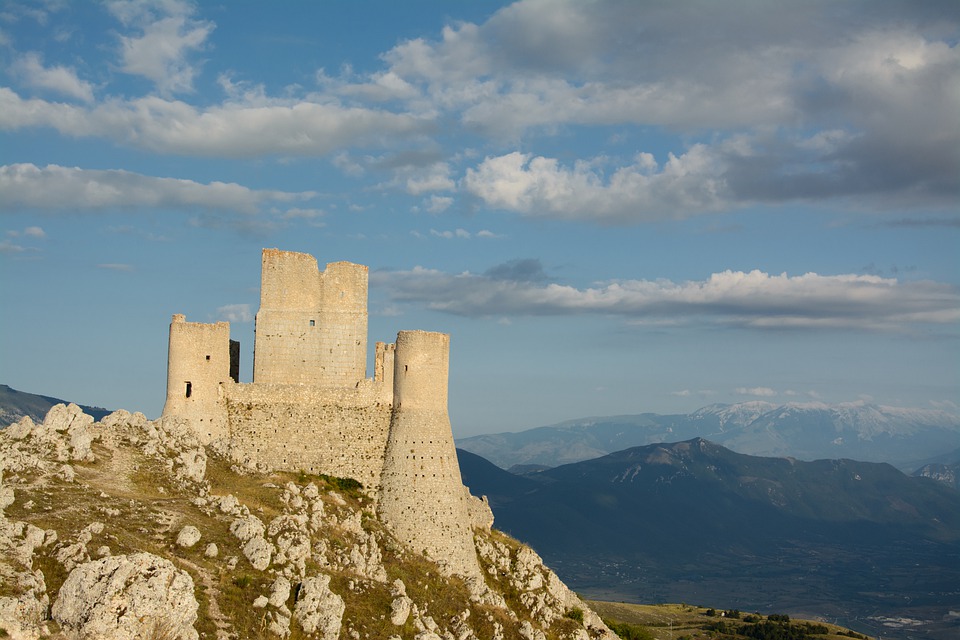
Inside the Gran Sasso and Monti della Laga National Park, at 1460 m, stands the Rocca di Calascio, in the province of L’Aquila. The imposing medieval structure, all built in white stone, is one of the highest in Italy. Perched in the mountains, it overlooks the ancient, now uninhabited, village below. Its undoubted charm has made it a perfect set for several films, including the unforgettable “Lady Hawke” and “The Name of the Rose”, and the most recent “The American” with George Clooney.
9. Castle of Marostica, Marostica (Veneto)
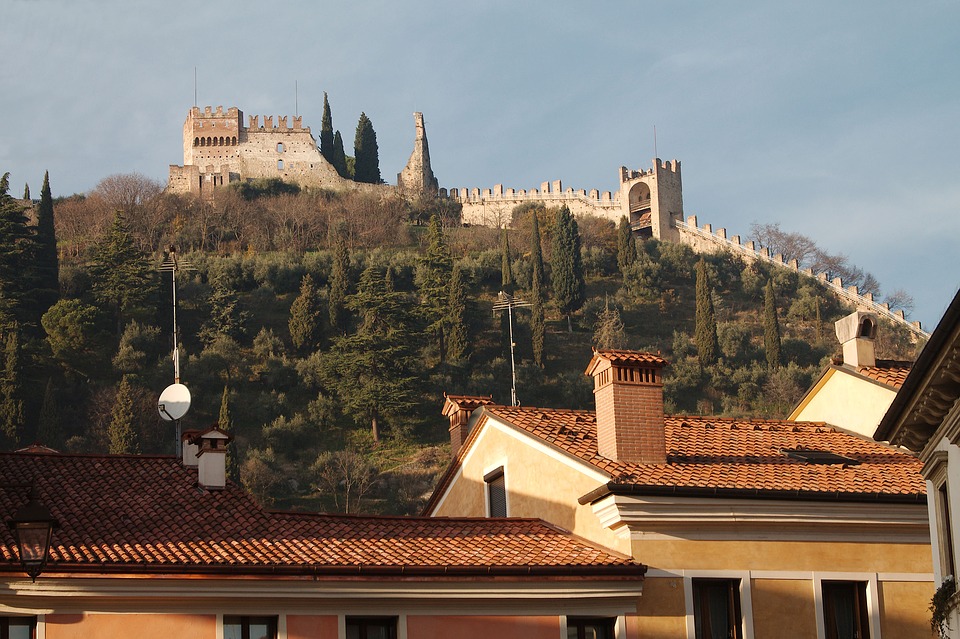
Actually, there are two castles, Upper and Lower, joined by a 1,800 meters long wall. In the pretty town of Vicenza, four doors along the walls allow access to the historic center characterized by the unmissable Piazza deli Scacchi. Every two years, there is a real match with living characters in costumes. Opposite the Lower Castle and the Piazza stands the Doglione, also known as Rocca di Mezzo, which was once a toll booth.
8. Aragonese Castle, Ischia (Campania)
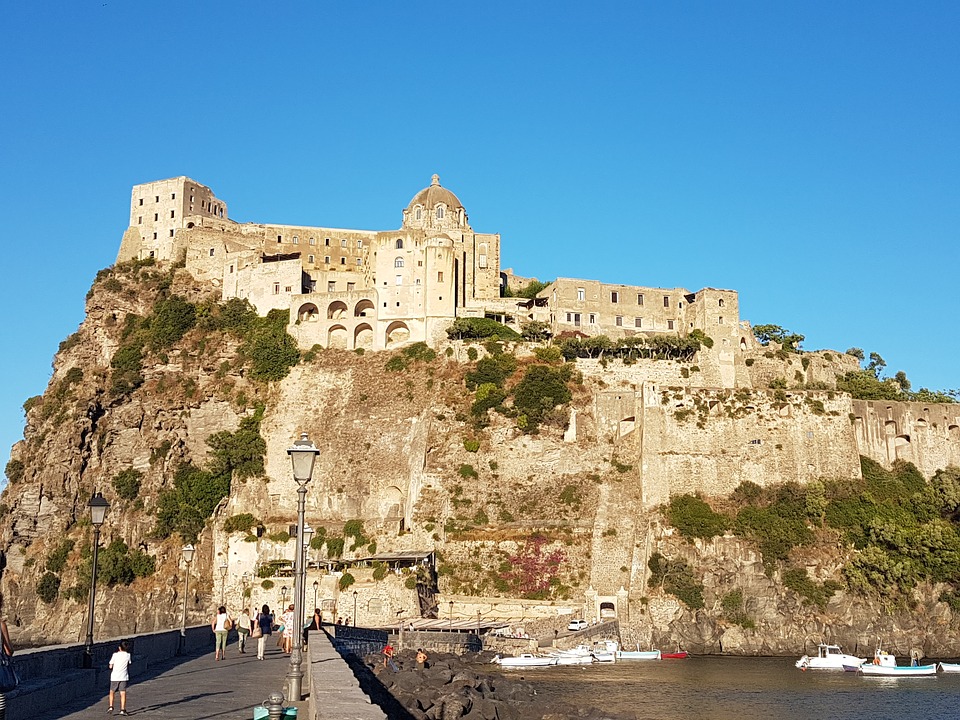
This castle stands on an islet and is connected to the ancient Borgo di Celsa, now known as Ischia Ponte, by a brick bridge. Thanks to Alfonso V of Aragon, one can access the castle through a tunnel dug into the rock. Before that, it could only be accessed by sea. The tunnel, 40 meters long, is illuminated by high skylights which at the time also served as “sinkers” from which boiling oil, stones, and other materials were thrown on any enemies. In this castle, in 1952, some scenes of the movie “The Green Island Corsair” with Burt Lancaster were shot.
7. Castel dell’Ovo, Naples (Campania)
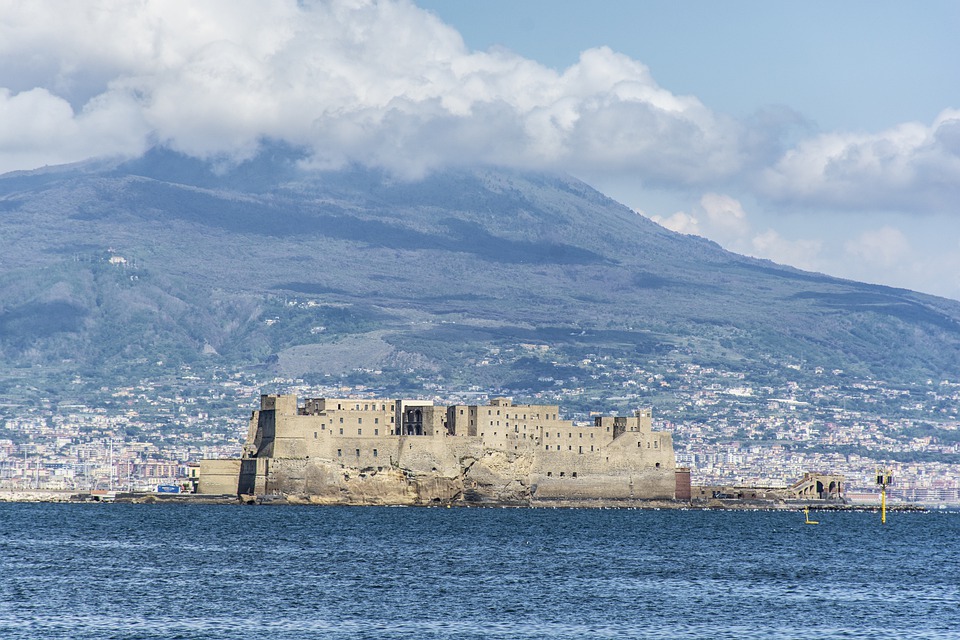
It’s the oldest castle in the city of Naples and, not surprisingly, one of the prominent elements in the famous panorama of its gulf. It no longer has its original appearance due to various reconstructions over the centuries.
Its interesting name, which in English means “Egg Castle” derives from an ancient legend: the Latin poet Virgil, who was also considered a magician in the Middle Ages, high in the dungeons an egg that could keep the entire fortress standing. Its breaking would have caused not only the collapse of the castle but also a series of disastrous catastrophes in the city of Naples. During the 14th century, the castle suffered extensive damage. To prevent panic from spreading among the people, the queen had to swear that she had replaced the egg.
6. Scaligero Castle, Sirmione (Lombardia)
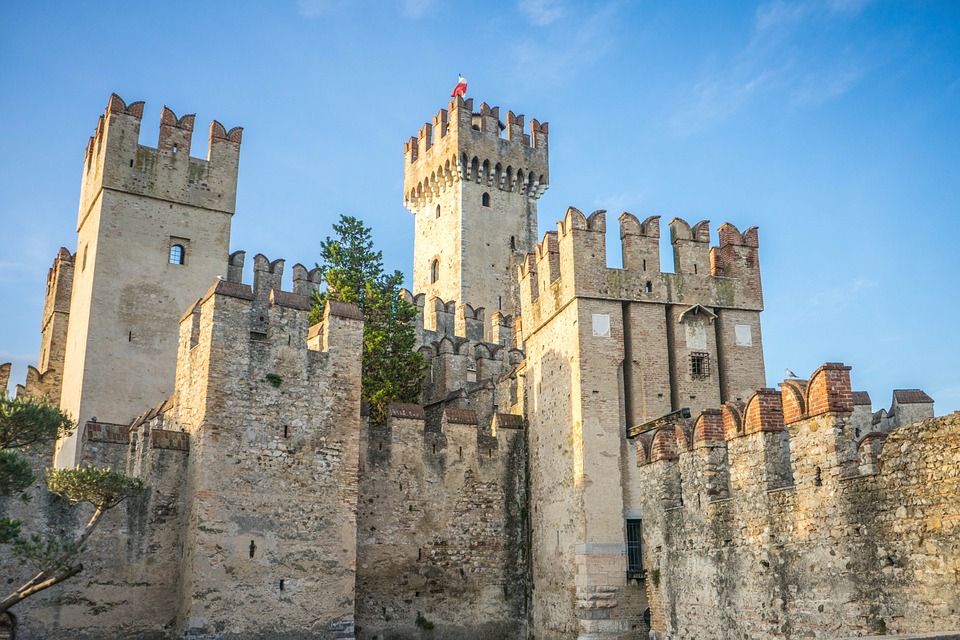
One of the most complete and best-preserved castles in Italy. It is a rare example of lake fortification. The castle is bathed on all sides by the waters of Lake Garda. On one side, there is the dock, once a refuge for the Scaligera fleet. The walls and the three major towers have dovetail battlements. Behind the latter emerges the imposing keep, with cells intended for prisoners below. It’s possible to access the walkways and even get to the top of the latter, as well as enjoy the splendor of the dock.
A sad legend of love has it that on stormy nights the soul of Ebengardo wanders around the castle looking for his Arice.
5. Castel del Monte, Andria (Puglia)
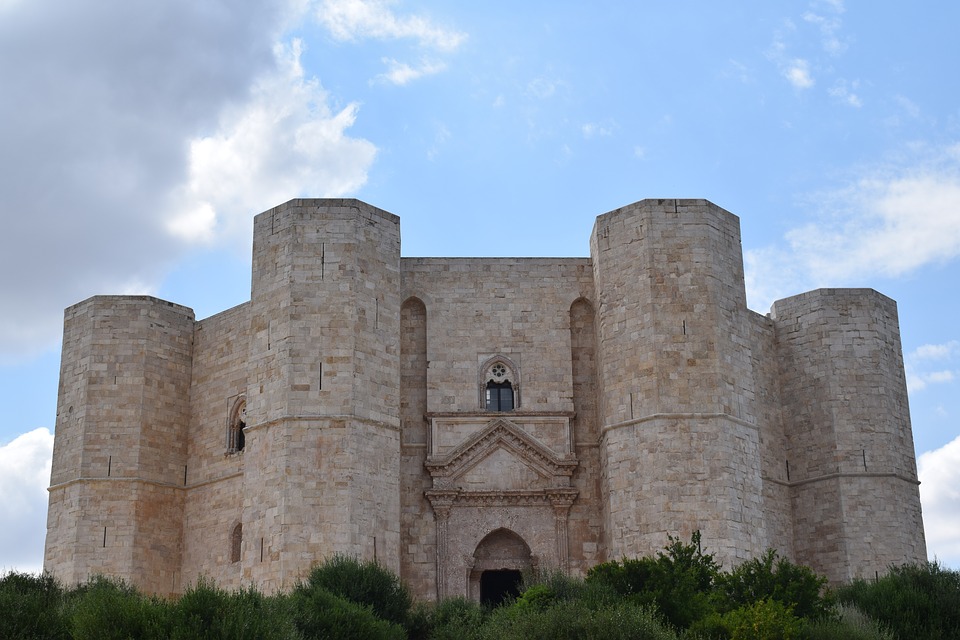
It is definitely one of the most mysterious castles in Italy. Castel del Monte is a 17th-century building built by Emperor Frederick II, it today’s municipality of Andria, on a hill at 540 m. It has an octagonal plan with a turret which is also octagonal at each corner. No moat or military architectural element, it doesn’t reside in a strategic position, it has narrow spiral staircases that are uncomfortable for defense and escape functions, slits too narrow to shoot arrows, and there are no stables. It was certainly built according to precise mathematical-astronomical geometries as well as taking into account numerous symbolisms.
But is it really a castle? According to a recent hypothesis, it could be a place fr body care based on the Arab hammam model. In fact, it has multiple and ingenious systems for channeling and collecting water, tanks, and the oldest bathrooms in history. It also has a particular conformation as well as an obligatory internal path. Its unusual shape also seems to recall that of a crown.
4. Fénis Castle, Fénis (Val d’Aosta)
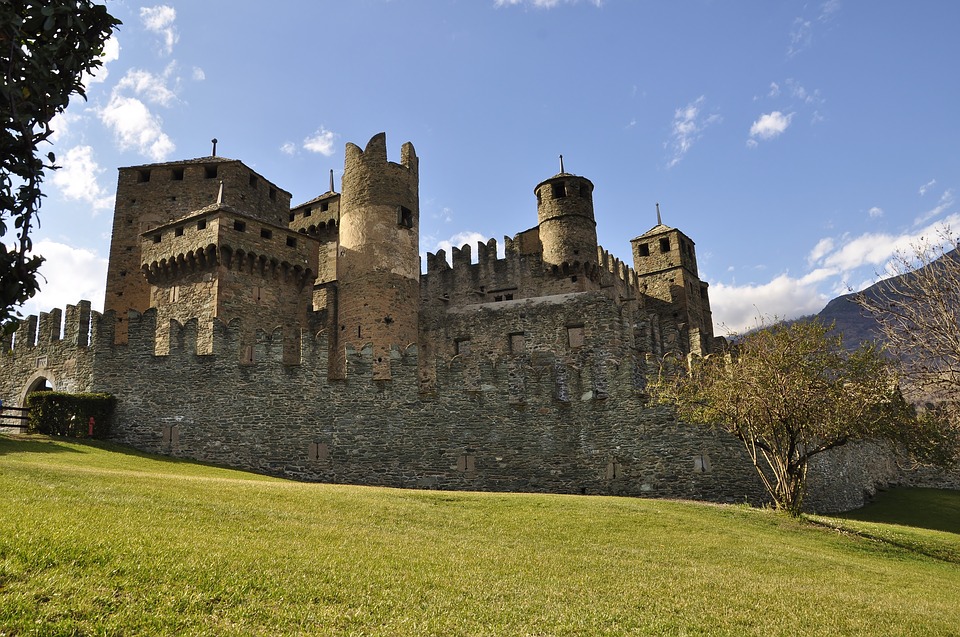
A scenographic structure: its position is on a gentle hill and its elegant crenelated walls lead us to think of an almost fairytale rather than defensive function or representation. It’s one of the best-preserved medieval castles in Italy.
Masks with apotropaic function (i.e. useful to drive away evil influences) on the walls, a fresco depicting St. George killing the dragon, a courtyard with a series of essays drawn (each different from the others) holding parchments with proverbs and moral maxims in old French, the surrounding nature… everything takes you back to the legendary life of a distant bygone era.
Cinematic fun facts: various scenes of: “Fracchia against Dracula” and the TV series “The Black Arrow” were shot in the castle.
3. Castel Sant’Angelo, Roma (Lazio)
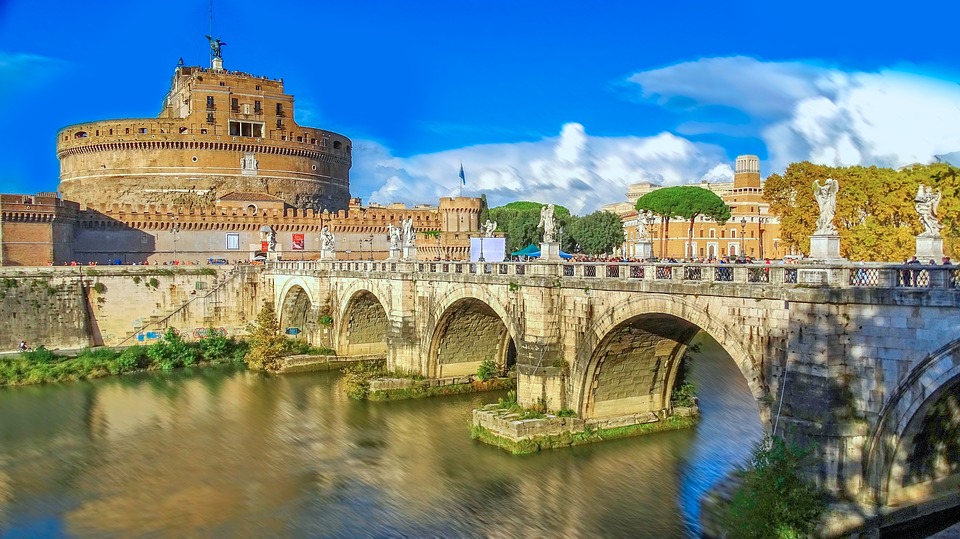
It stands on the right bank of the Tiber, not far from the Vatican to which it is connected via a fortified corridor. Modified several times, many rooms were used as prisons. The most infamous cell was the one called Sammalò: the condemned man was lowered into it from above and, due to the very limited space, he could neither stand nor lie down. Some cells were reserved for politicians while others for prominent personas. The “dungeons” were evasion-proof. There was a luxury cell, reserved only for inmates of a certain value.
The name of the castle derives from the vision the Pope Gregory the Great had of Archangel Michael sheathing his sword. This vision was interpreted as an omen of the imminent end of the plague, which actually happened. To commemorate the event, a statue of an angel crowns the building.
Fun facts: Puccini set the last act of “Tosca” here; the castle is one of the settings of Dan Brown’s “Angels and Demons”; the castle appears in the video game “Assassin’s Creed”.
2. Sforzesco Castle, Milan (Lombardy)
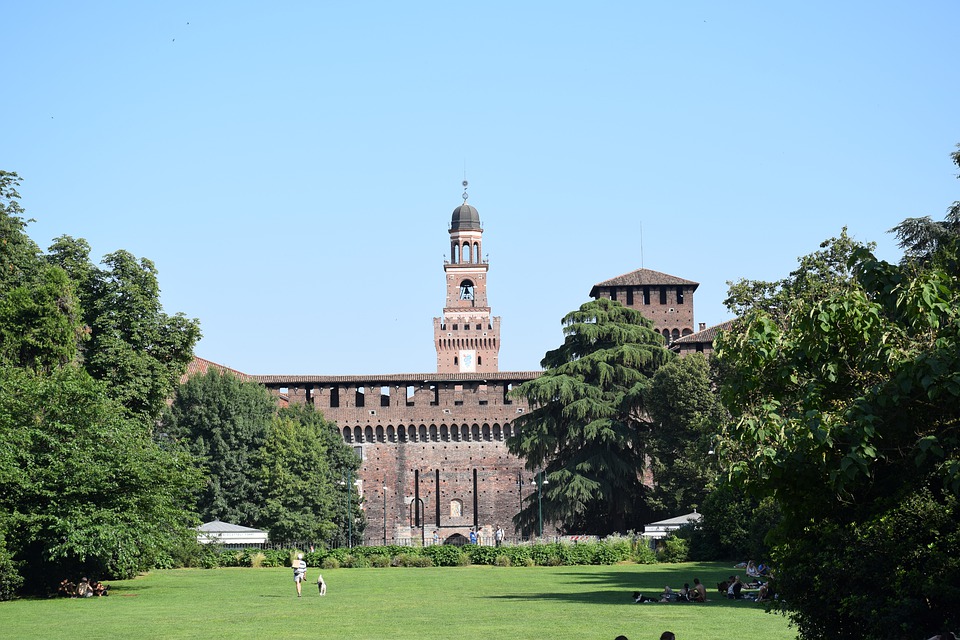
It is one of the main symbols of Milan and its history. It was built in the 15th century by Francesco Sforza, on the remains of a previous fortification. Over the centuries, it has undergone significant transformations. It’s one of the largest castles in Europe. The outer wall of fortifications, called “Ghirlanda”, is the oldest part. The four corners are made up of towers, each oriented according to one of the cardinal points. They have two different shapes: South and East cylindrical, North and West square. The entire perimeter is still surrounded by the ancient moat, now no longer flooded. The Torre del Filarete, the highest and most central, is the main entrance. The rear facade is the oldest and there is the so-called Ponticella di Ludovico il Moro: a bridge structure that connected the ducal apartments to the external walls that are now disappeared. Ludovico was locked up in his rooms for the mourning caused by the loss of his beloved wife Beatrice d’Este, which were later called ” Black Rooms” for this reason.
1. Miramare Castle, Trieste (Friuli Venezia Giulia)
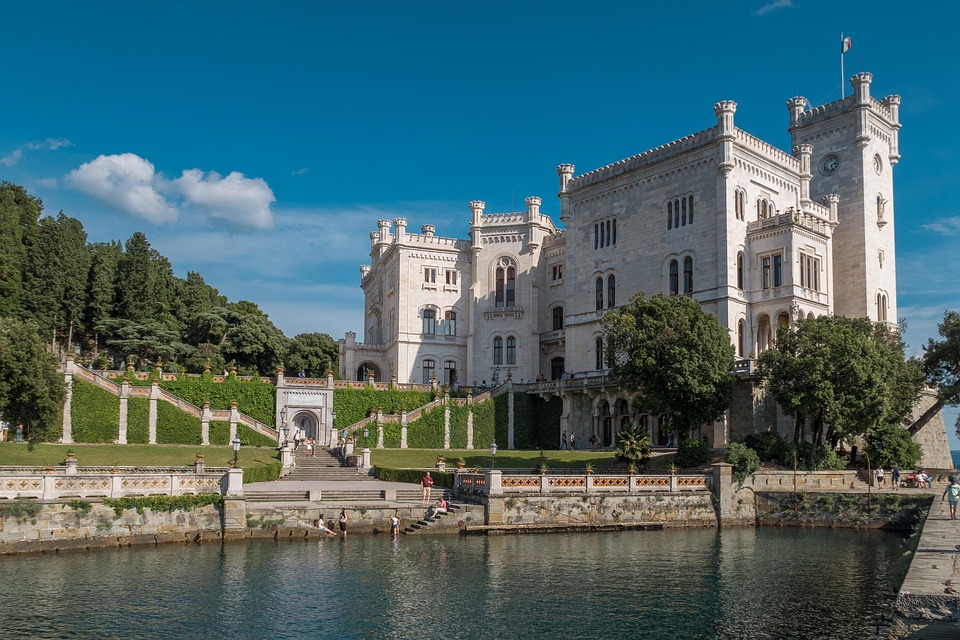
Reaching the first position, we find the Italian castle par excellence that can make you feel like princes and princesses for a day! Surrounded by a luxuriant park, it rises above the sea, majestically observing the Gulf of Trieste. A prestigious building with an enchanting view! It was built by Archduke Ferdinand Maximilian of Habsburg to share it with his wife Charlotte of Belgium. Definitely a gesture of a true gentleman of the past! It is a luxurious noble residence that has preserved its precious original furnishings.
In the park, there is also the Castelletto: a smaller building that served as a temporary residence for the couple during the construction of the castle.
The only drawback is the sad love story of the fairytale couple. Charlotte lost her right after the killing of her husband in Mexico and the splendid castle and the romantic Castelletto became a sad scenario of the unhappy fate that didn’t allow them to enjoy this wonderful home.
Check out these amazing hotel deals!
- Save up to 30% on your hotel in Hawaii!
- Last-minute holiday hotel deals
- Top hotel deals for a new year trip
- Visiting Paris? Find the Best Deals & Reviews at TripAdvisor.
- Save 30% on hotels in Ocean City, Maryland...a TripAdvisor Top 10 Summer Destination!
- Save up to 30% on your hotel on your Winter Vacation!
- Find top-rated hotels at the lowest prices on TripAdvisor. Check rates now!
- Save up to 30% on hotels for a romantic getaway!!
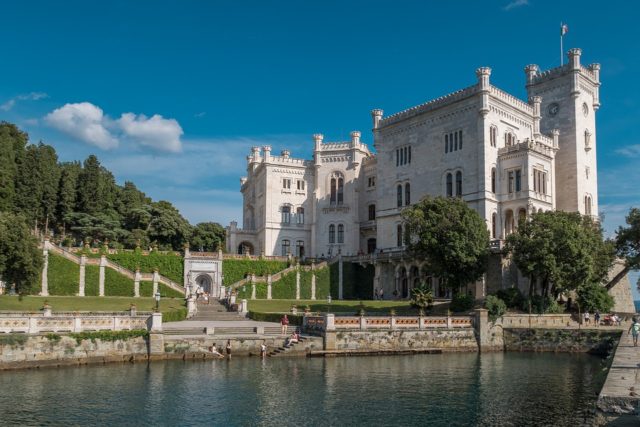

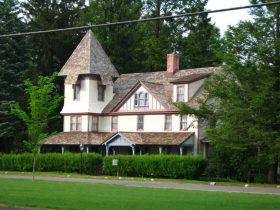



Find Us on Socials